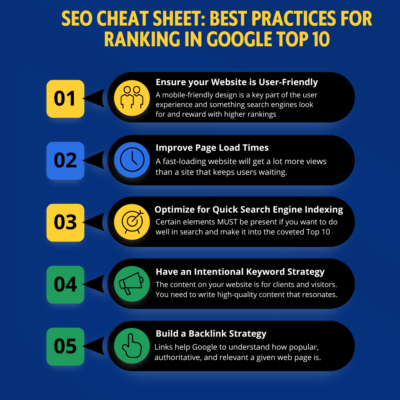
Everything You Need To Know About Keyword Research

What is Keyword Research – and Why Does it Matter?
According to HubSpot, keyword research is the process of searching for and analyzing the search terms or phrases that people use in search engines. This information is used for the purpose of search engine optimization or general marketing. Successful keyword research will help marketers to discover queries to target, the popularity of these terms, ranking difficulty, and more.
This research provides valuable insight into what your target audience is actually looking for on search engines. These concepts can inform content strategy as well as larger marketing initiatives. Simply put, people use keywords when searching for something online. If you can target these terms effectively, then your content will end up in front of relevant users. The more your content can get in front of your audience as they conduct searches, the better. Furthermore, inbound marketing is an important lead-generation strategy that leverages content around what people want to discover. Inbound marketing is a great way to generate leads and move prospects through your marketing funnel. However, these efforts are dependent on great content – which is reliant on the right keywords. Other benefits of keyword research include:
- Insight into current marketing trends and relevant topics
- Higher placement in search engine result pages, which will drive more website traffic
- An opportunity to provide real insights and answer actual questions, which is important for generating leads
The Intent Behind Keywords
There’s been some debate in recent years around how important keywords actually are. Keywords are still vital, but it’s necessary to think of the intent behind the keywords, rather than just the terms themselves. What the algorithms look for is how well a piece of content aligns with a searcher’s intent. Because of this, marketers should think about the topics people care about, not just the keywords. Look for keywords that are getting a high volume of searches, and then organize your content into topics. Use the topics to dictate which keywords to target.
There are three main components to look for when conducting keyword research. These are:
Relevance
This is where the concept of search intent comes into play. Your content should be the best resource for a particular search intent.
Authority
Google gives more weight to sources that it deems authoritative. Informative content enriched with social signals and backlinks will be more credible.
Volume
If you rank on the first page for a term that no one searches for, it won’t help you much. The monthly search volume matters.
For a breakdown of all the different SEO terminology, check out this complimentary webinar: SEO Basics in an Hour.
Before You Start
Before you start researching keywords, you first have to understand who your firm is, who your ideal client is, and your goals. The thing with keyword research is that what your firm wants to rank for and what your audience is actually searching for can be two completely different things. Start off by focusing on your audience first.
So, if you’re a personal injury law firm, for example, you might ask:
- What types of services are my audience searching for?
- Who is searching for these terms?
- When are people searching for these terms? Does it change seasonally?
- How are people searching for these services?
- What words do they use?
- What questions do they have?
- Are more searches performed on mobile devices?
- Why are people searching for personal injury services?
- Are people looking for lawyers specifically or are they just trying to find a solution to their problem?
- Where are my potential clients located?
These questions may seem pretty basic, and you may have answers to a lot of them already, but it’s absolutely crucial that you base your keyword selection around searcher intent, rather than your firm’s own desires or ideas. Take some time to understand your audience on a deeper level and what they’re searching for/ how they’re searching.
How to Research Keywords for Your SEO Strategy
There may be some differences in how you perform research based on how you plan to use the keywords. A strong keyword strategy for SEO includes these steps:
1. Create a list of important, relevant topics based on the insights you already have on your audience.
Come up with 5-10 “buckets” that matter to your clients or prospects. Client personas are helpful here. Write down the topics along with their monthly search volume.
2. Fill in your topic “buckets” with keywords.
This is where you will identify the terms people are using to search for content in your topic areas. For example, if one of your buckets was “divorce”, then a key phrase might be “How to find a divorce attorney”. This list is not your final list, it’s more of a brain dump that will be narrowed down later. It’s also helpful in this step to understand which keywords your website is already ranking for (you can find this data by reviewing Google Analytics or other website analytics software). Feel free to try leveraging an AI solution like ChatGPT to help get the ball rolling when coming up with ideas.
Related: What Law Firms Need to Know About Google Analytics 4 [A Complimentary, On-Demand Webinar]
3. Analyze keywords based on intent.
Use intent has become one of the most critical factors in search. A web page must address the problem a searcher intended to solve with their query. To get an idea of intent, enter the keywords into a search engine yourself and see what comes up. Judge how closely the content that returns matches the intent of your search, and go from there.
4. Research other search terms.
It’s important to flesh out your selected keywords. To discover more keywords that people might be searching, look at related search terms that come up when you plug a keyword into Google. After entering a phrase, you’ll see other search terms at the bottom of the SERP. These keywords should be considered, or spark other ideas for more research.
5. Leverage keyword research platforms.
SEO tools can help you to come up with more keywords or find them based on the ideas you’ve generated already. Some of the most popular tools include:
- Ahrefs
- SEMrush
- Ubersuggest
- Google Keyword Planner
- Moz
How to Choose Keywords for Your Website
Based on your research, you’ll have an idea of which keywords you want to rank for. You want to refine this list based on your overall strategy, using these steps:
1. Use Google Keyword Planner to narrow down your list.
With this tool, you can view the monthly search volume and traffic estimates for terms you’re considering. Then you can use Google Trends to take things a step further. In this step, you should flag or remove any keywords that have too low of a search volume.
2. Prioritize the keywords that you have the best chance of ranking for.
Look for keywords that you have a higher chance of ranking for based on authority, and try to find keywords that have less competition.
3. View the monthly search volume for keywords.
Use tools like Google Trends to find the most searched keywords. Pay attention to search volume and select keywords that have a large enough volume to make it worth your time but aren’t so competitive that you don’t have a chance of ranking.
4. Consider SERP features as you choose keywords.
Google has several feature snippets that you can take advantage of if used correctly.
- Image packs – These are the search results displayed as a horizontal row of images that appear in an organic position.
- Paragraph snippets – Also called featured snippets, these are short blocks of text that appear at the top of Google search results. They typically provide quick answers to common search questions.
- List snippets – These highlight snippets are made for posts outlining steps to do something from start to finish. You’ll often see them for “how-to” articles.
- Video snippets – Sometimes Google places short videos at the top of search results rather than text.
5. Ensure you have a blend of head terms and long-tail keywords across content.
Head terms are shorter phrases that usually have no more than 3 words. Long-tail keywords are more verbose, typically with more than 3 words. Successful content will use a mix of both. Head terms are usually searched more frequently, but long-tail keywords are more specific and therefore more targeted. If you cover both of those bases, you are likely to get more qualified searchers in addition to more traffic.
6. Understand what your competitors are ranking for.
A keyword might be important to a competitor and not to you (and vice versa), but it’s still going to be valuable to see what they’re targeting and how they rank. You might find that a competitor is ranking well for one of your targeted terms, which indicates you need to put more effort into that content. However, you may find that there are some targeted keywords that they’re not ranking for at all, and that presents an opportunity for you. This is another area where balance can help you. A mix of highly competitive keywords as well as low-hanging fruit will serve you best.
7. Get strategic.
Now that you’ve found keywords based on search volume and have taken a look at competitors, try looking at things even more granularly. Some keywords are only meant for specific locations, these are local keywords. If you’re a firm that works locally, search for keywords based on location, like ‘Pennsylvania personal injury law firm’. Also, take a look at the seasons. Do certain keywords rank better at different times of the year? Such as, ‘swimming pool personal injury accident.’
8. Look at search term type.
Users search for terms in a number of ways that may be in a different format than what you’d assume. There are 5 different categories of search term types:
- Informational queries: the searcher needs information such as the name of a store or the height of the Empire State Building
- Navigational queries: the searcher wants to go to a certain place on the internet like a specific website page
- Transactional queries: the searcher wants to take action such as purchasing something
- Commercial investigation: the searcher wants to compare products and buy the best one
- Local queries: The searcher wants to find something based on location
By looking at which format is most popular for your keywords, you can get a better idea of how your audience is searching for things and how to best phrase your keywords.
9. Determine the value of your keywords.
Leverage tools to determine how much value your keywords would add to your site and select those that are most high value. Use tools like Moz Keyword Explorer, Google Keyword Planner, Google Trends, or SpyFu Keyword Research Tool.
The Right Keywords for SEO
There are no “best” keywords – just those that are the most searched by your target audience. At the end of the day, your goals are to rank pages and drive traffic. The most profitable keywords will take relevance, authority, and volume into account. Look for highly searched keywords that you can realistically rank for given the level of competition you’re up against, and your ability to produce content that is better quality than what’s currently ranking.
Takeaway:
This article isn’t meant to be a robust guide, but it’s a good start. Follow these steps and you’ll be able to find and target keywords to support both long and short-term goals. Make sure to re-evaluate often, even every quarter, as the digital landscape changes rapidly.
Keywords are an essential component of your digital marketing efforts – and an area that you must get right. If you’re unsure where to begin or think your keyword strategy might need some sprucing up, reach out. You can also try our free SEO Audit to see where your website stands. This report helps firms to find and fix issues that are preventing them from achieving the ranking or traffic they want. If you’re still unsure how to improve your SEO efforts, contact us today for a free consultation and we can help you take the next steps.
This post has been edited and republished from Feb. 4, 2022.
Let’s get started, and finished
Contact us to get started on your Technology Strength Scorecard and energize your business development process.
Contact Us

